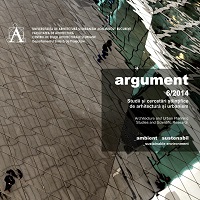PROIECTAREA COMUNICATIVĂ, FACTOR CHEIE AL SUSTENABILITĂŢII ARHITECTURII SOCIALE
COMMUNICATIVE PLANNING, THE KEY OF SUSTAINABILITY IN SOCIAL ARCHITECTURE
Author(s): Lorin Constantin NiculaeSubject(s): Architecture, Policy, planning, forecast and speculation, Sociology of Art
Published by: Editura Universitară “Ion Mincu”
Keywords: participation; communicative planning; social architecture; advocacy;
Summary/Abstract: The article analyzes the architect’s position in the public sphere in terms of communicating the social architecture project to the users. In the paradigm of participatory social architecture, all decisions regarding the project, meaning the structured process which involves many successive agreements between the architect and the community that he designs for, obtained by means of deliberations are called communicative planning. If this is missing, the architect is isolated, he doesn’t have a real and constructive feedback from the potential users, and the resulting architectural object lacks foundation. Social architectural objects, based rigorously on statistics and studies on users, claiming to be exhaustive, but lacking the direct contact with the users even from the design phase, ended up demolished, because their functioning proved to be bankrupt, deficient and undemocratic. The concept of communicative planning, introduced by the American architect and professor John Forester, moves the design method from the field of instrumentalization, from the field of generating information and objective techniques so an authority can make use of it, to the field of negotiating the legitimacy; in other words, from the field of efficiency to the field of ethics, equity and sustainability.
Journal: Argument
- Issue Year: 2014
- Issue No: 6
- Page Range: 29-42
- Page Count: 14
- Language: English, Romanian

